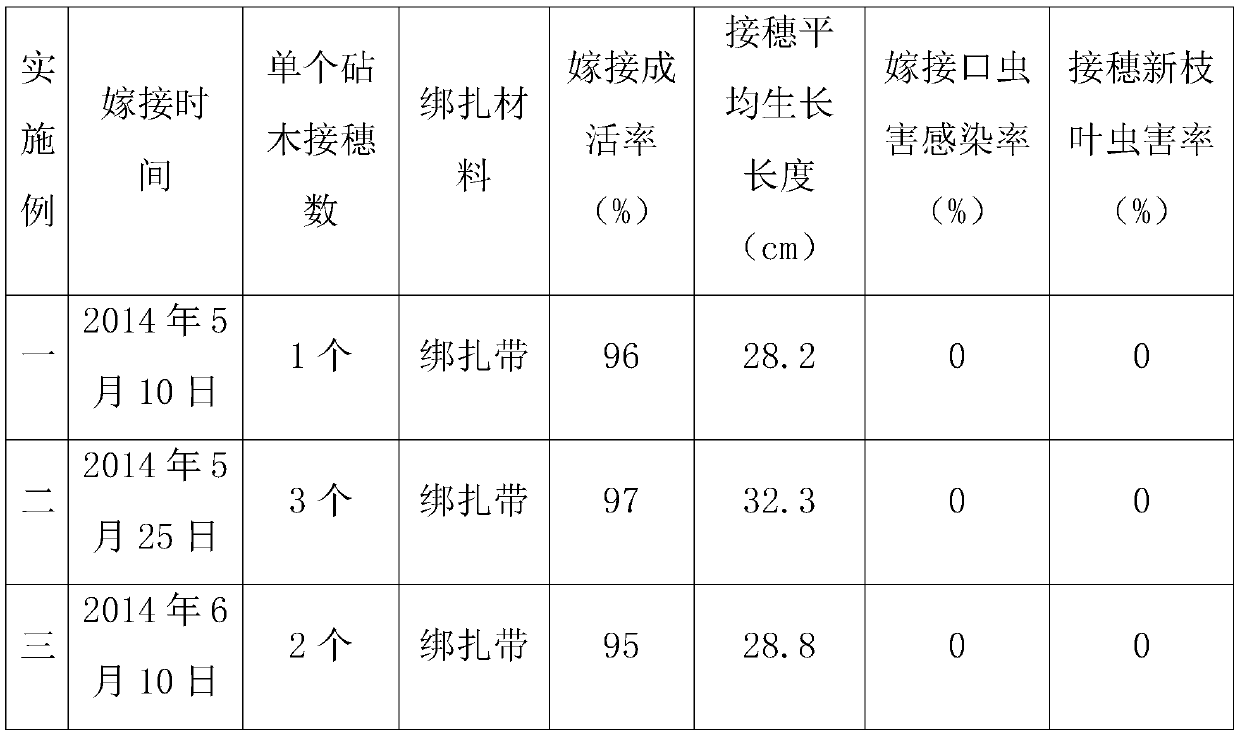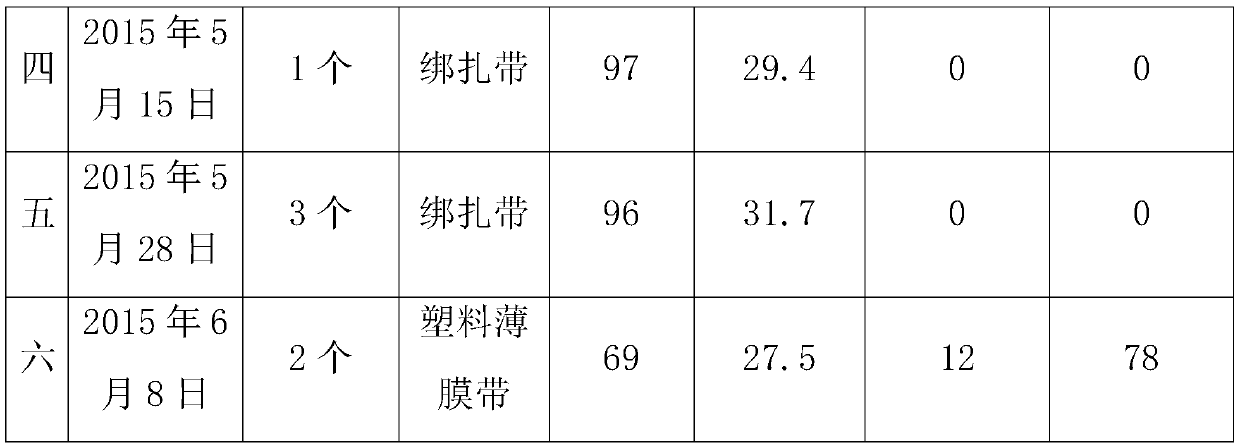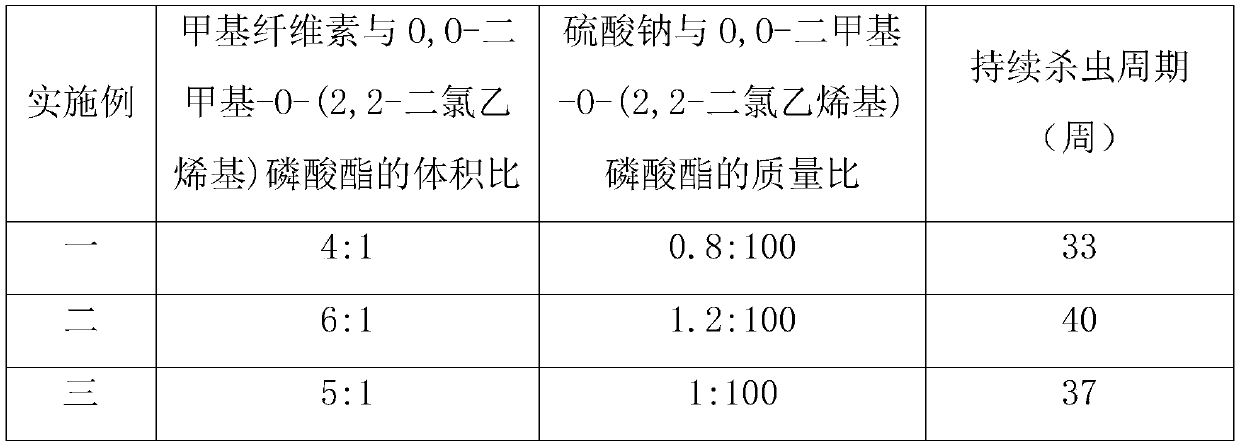A kind of large tree grafting method of C. chrysantha
A technology of camellia japonica and large trees, which is applied in the field of forest tree propagation, can solve the problems of unfavorable large-scale production of asexual reproduction of camellia japonica, low reproduction coefficient, large propagation materials, etc., and achieve improved ornamental value, low cultivation cost, and high growth and development strong effect
- Summary
- Abstract
- Description
- Claims
- Application Information
AI Technical Summary
Problems solved by technology
Method used
Image
Examples
Embodiment 1
[0039]On May 10, 2014, in the periphery of the upper part of the canopy of C. japonica, the semi-lignified branches of the year that were healthy, free from diseases and insect pests, and full of axillary buds were collected as spikes, and then put into a container with ice cubes and wet towels. In the foam box, on the same day, use a single-sided blade to cut the scion into a length of 2.0cm-2.5cm, keep the scion with one leaf and one bud, cut off 1 / 2 of each leaf, and cut off from the 0.3cm-0.5cm above the leaf bud of the scion , the lower end of the leaf bud remains 1.6cm to 2.0cm long, and then straight down from the 0.3cm to 0.5cm below the bud base to a long section with a length of 1.6 to 2.0cm. The xylem can be seen slightly on the long section, and the pith can be seen at the base. Then cut a horse ear-shaped short section at an angle of 20 to 30 degrees on the back of the long section; select a common Camellia oleifera tree with a smooth surface, no pests and diseases...
Embodiment 2
[0043] On May 25, 2014, in the outer periphery of the upper part of the crown of C. japonica, the semi-lignified branches of the year that were healthy, free from diseases and insect pests, and full of axillary buds were collected as spikes, and then put into a container with ice cubes and wet towels. In the foam box, on the same day, use a single-sided blade to cut the scion into a length of 2.0cm-2.5cm, keep the scion with one leaf and one bud, cut off 1 / 2 of each leaf, and cut off from the 0.3cm-0.5cm above the leaf bud of the scion , the lower end of the leaf bud remains 1.6cm-2.0cm long, and then straightly and obliquely pulls a long section with a length of 1.6cm-2.0cm from the 0.3cm-0.5cm below the bud base. The xylem can be seen slightly on the long section, and the pith can be seen at the base , and then cut a 20-30-degree horse-ear-shaped short section on the back of the long section; select a common Camellia oleifera tree with a smooth surface, no pests and diseases,...
Embodiment 3
[0047] On June 10, 2014, in the periphery of the upper part of the crown of C. japonica C. japonica, we collected semi-lignified branches of the year that were healthy, free from diseases and insect pests, and full of axillary buds as cuttings, and then put them in a container with ice cubes and wet towels. In the foam box, on the same day, use a single-sided blade to cut the scion into a length of 2.0cm-2.5cm, keep the scion with one leaf and one bud, cut off 1 / 2 of each leaf, and cut off from the 0.3cm-0.5cm above the leaf bud of the scion , the lower end of the leaf bud remains 1.6cm-2.0cm long, and then straightly and obliquely pulls a long section with a length of 1.6cm-2.0cm from the 0.3cm-0.5cm below the bud base. The xylem can be seen slightly on the long section, and the pith can be seen at the base , and then cut a 20-30-degree horse-ear-shaped short section on the back of the long section; select a common Camellia oleifera tree with a smooth surface, no pests and dis...
PUM
 Login to View More
Login to View More Abstract
Description
Claims
Application Information
 Login to View More
Login to View More - R&D
- Intellectual Property
- Life Sciences
- Materials
- Tech Scout
- Unparalleled Data Quality
- Higher Quality Content
- 60% Fewer Hallucinations
Browse by: Latest US Patents, China's latest patents, Technical Efficacy Thesaurus, Application Domain, Technology Topic, Popular Technical Reports.
© 2025 PatSnap. All rights reserved.Legal|Privacy policy|Modern Slavery Act Transparency Statement|Sitemap|About US| Contact US: help@patsnap.com



